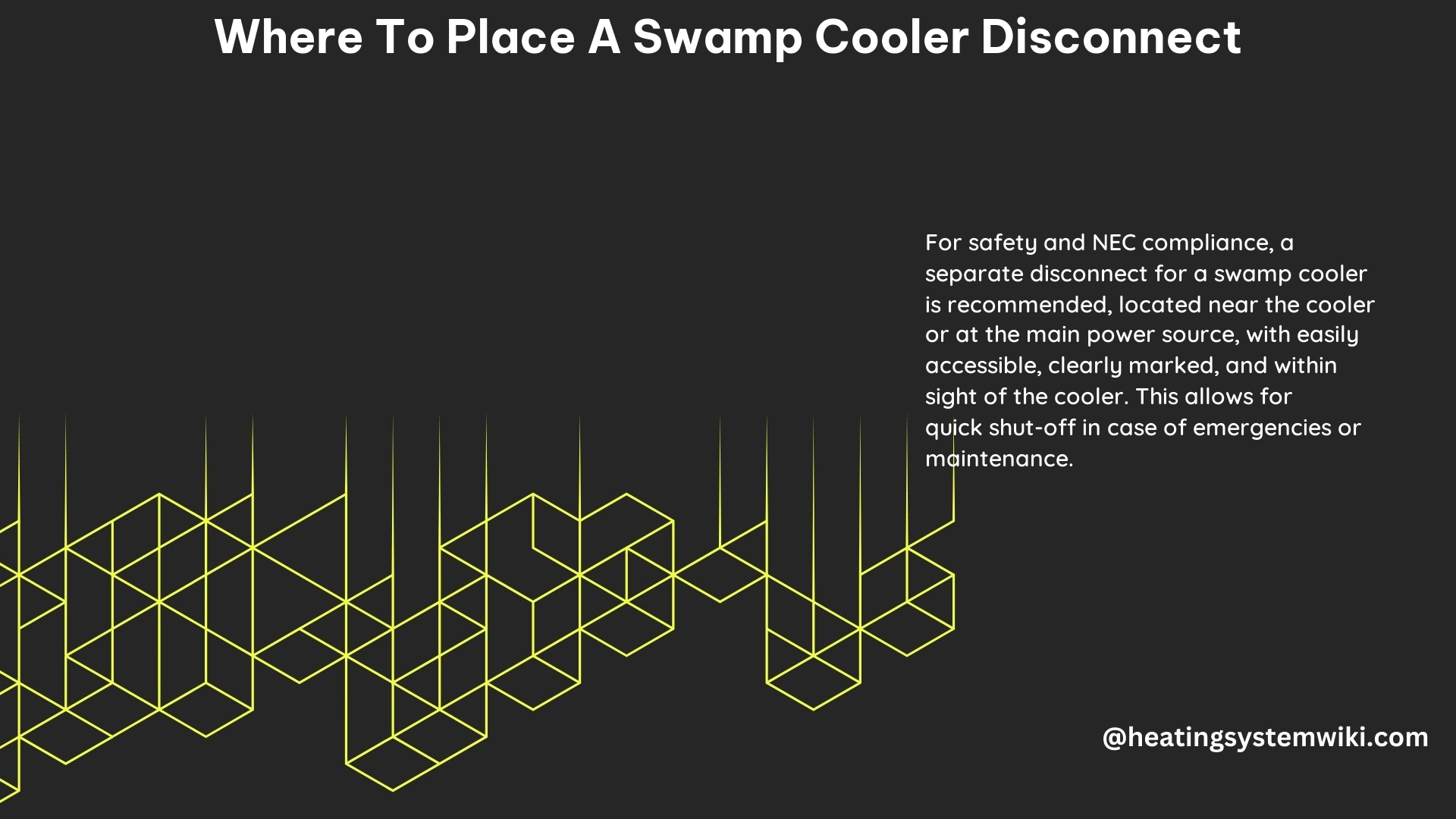When it comes to the placement of a swamp cooler disconnect, there are several technical and safety factors to consider to ensure the proper and safe operation of your cooling system. This comprehensive guide will provide you with the necessary information to determine the optimal location for your swamp cooler disconnect.
Understanding the National Electrical Code (NEC) Requirements
The National Electrical Code (NEC) mandates that all evaporative coolers, including swamp coolers, must have a disconnecting means. This disconnect can be located either within sight of the cooler or at the main service panel that supplies power to the unit.
Disconnect Location Options
- Near the Swamp Cooler: Placing the disconnect near the swamp cooler, such as on an exterior wall or in a weatherproof electrical box, allows for easy access in case of an emergency or for routine maintenance.
- At the Main Service Panel: Locating the disconnect at the main electrical panel that feeds power to the swamp cooler is also an acceptable option, as long as it is within sight of the cooler.
Technical Specifications for the Swamp Cooler Disconnect

When selecting the appropriate disconnect for your swamp cooler, it is crucial to ensure that it is rated for the correct voltage and amperage of the cooler’s motor.
Voltage and Amperage Ratings
- Swamp cooler motors are typically rated for either 120 volts or 240 volts.
- The amperage rating of the disconnect should match the motor’s amperage requirements, which can range from 15 amps to 30 amps or more, depending on the size of the cooler.
Disconnect Type and Features
- The disconnect should be a heavy-duty, non-fused type, suitable for outdoor use.
- It should have a visible “on/off” switch or lever to easily identify the disconnect function.
- The disconnect should be equipped with a weatherproof enclosure if installed outdoors to protect it from the elements.
Proper Installation and Grounding
Ensuring the swamp cooler disconnect is properly installed and grounded is crucial for safety and compliance with electrical codes.
Installation Considerations
- The disconnect should be mounted securely in a readily accessible location, either near the cooler or at the main service panel.
- The wiring between the disconnect and the cooler should be routed through a conduit or cable tray to protect it from damage.
- The disconnect should be labeled clearly to identify it as the switch for the swamp cooler.
Grounding Requirements
- The disconnect must be properly grounded to the electrical system’s grounding electrode, typically the ground rod or grounding bus bar.
- The grounding conductor should be sized appropriately based on the disconnect’s amperage rating.
- Proper grounding helps to prevent electrical hazards and ensures the safe operation of the swamp cooler.
DIY Installation Guidance
For homeowners undertaking a DIY installation of a swamp cooler disconnect, it is essential to follow the manufacturer’s instructions carefully and consult with a licensed electrician if you have any doubts or questions.
Manufacturer’s Instructions
- Carefully review the manufacturer’s installation manual for the specific make and model of your swamp cooler disconnect.
- Ensure that you understand all the steps involved in the installation process, including the proper wiring connections and grounding requirements.
Consulting with a Licensed Electrician
- If you are unsure about any aspect of the installation, it is highly recommended to consult with a licensed electrician.
- An electrician can provide guidance on the appropriate disconnect selection, ensure proper installation and grounding, and help you comply with all relevant electrical codes and safety standards.
By following the guidelines outlined in this comprehensive guide, you can ensure that your swamp cooler disconnect is placed in the optimal location, meets all technical specifications, and is properly installed and grounded for safe and reliable operation.
